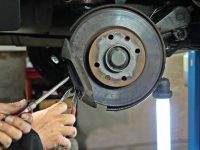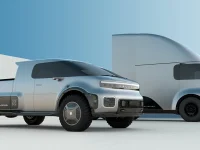Suds to Shine: The Evolution of Car Wash Equipment

The car wash industry has come a long way from the simple bucket-and-sponge days. What began as a manual process relying on elbow grease has evolved into a multi-billion-dollar sector powered by advanced technology, precision engineering, and customer convenience. Today, car wash equipment is not only about cleaning vehicles—it’s about efficiency, sustainability, and enhancing the customer experience.
Early Days: Buckets, Brushes, and Hand Labor
In the early 20th century, washing a car meant filling a bucket with water, adding soap, and scrubbing every surface by hand. For businesses, this required significant manpower and time, which limited how many cars could be cleaned in a day. Hand-wash stations offered a personal touch, but they lacked speed and consistency.
As car ownership grew, particularly after World War II, demand for faster and more reliable washing solutions increased. This created an opportunity for entrepreneurs to innovate.
The Birth of Automatic Car Washes
The 1940s and 1950s saw the emergence of the first semi-automatic car washes. These relied on conveyors to pull cars through cleaning tunnels, while attendants handled rinsing and drying. By the 1960s, brushes, sprayers, and blowers were all built into automatic systems. This cut down on the need for workers and greatly increased output.
The introduction of automatic equipment not only changed how cars were washed but also reshaped car wash construction. Facilities needed to be designed with tunnels, drainage systems, and mechanical infrastructure to support these machines. This marked a turning point where construction and equipment design began to go hand in hand.
Advancements in Technology
From the 1980s onward, technology rapidly transformed the industry. High-pressure water jets replaced many rotating brushes, minimizing potential scratches. Touchless systems gained popularity by using carefully calibrated chemical solutions and water force to clean surfaces without physical contact.
This era also introduced computerized control systems, allowing operators to fine-tune water pressure, chemical application, and drying times. These improvements not only delivered consistent results but also improved efficiency, helping car wash businesses reduce waste and increase profitability.
Focus on Sustainability
Modern car wash equipment has also adapted to growing environmental awareness. Recycling systems now capture, filter, and reuse water, dramatically reducing consumption. Eco-friendly soaps and biodegradable cleaning agents minimize harm to the environment.
Today’s car wash construction projects often integrate sustainable designs, including solar power, water reclamation systems, and energy-efficient lighting. Customers increasingly favor businesses that demonstrate environmental responsibility, and equipment manufacturers have risen to the challenge by designing solutions that combine performance with eco-consciousness.
Customer Experience in the Spotlight
The evolution of car wash equipment is not just about the vehicles—it’s about the people driving them. Express exterior tunnels, self-service bays, and in-bay automatics provide options for every customer preference. Modern systems include colorful LED lighting, foam curtains, and digital payment kiosks that make the car wash experience more enjoyable and convenient.
Additionally, advanced drying systems and ceramic coating applicators have expanded service offerings, helping businesses generate more revenue while meeting consumer demand for premium care.
The Future of Car Wash Equipment
Looking ahead, automation and smart technology will continue to shape the industry. Artificial intelligence, remote monitoring, and predictive maintenance tools are already being developed to minimize downtime and optimize operations. Robotics may further enhance precision, while app-based loyalty programs and subscription models are making the customer journey more seamless than ever.
For business owners, investing in modern car wash equipment isn’t just about cleaning cars—it’s about building efficiency, sustainability, and customer loyalty into the foundation of their operations. And with each innovation, car wash construction will adapt to accommodate the latest systems, creating facilities that are smarter, greener, and more profitable.
Conclusion
From humble beginnings with a sponge and soap to today’s high-tech, eco-friendly systems, the evolution of car wash equipment reflects broader trends in technology, sustainability, and consumer expectations. What started as a labor-intensive chore has become a streamlined service powered by advanced machinery and thoughtful design. As the industry moves forward, one thing is certain: the journey from suds to shine will keep getting brighter.







